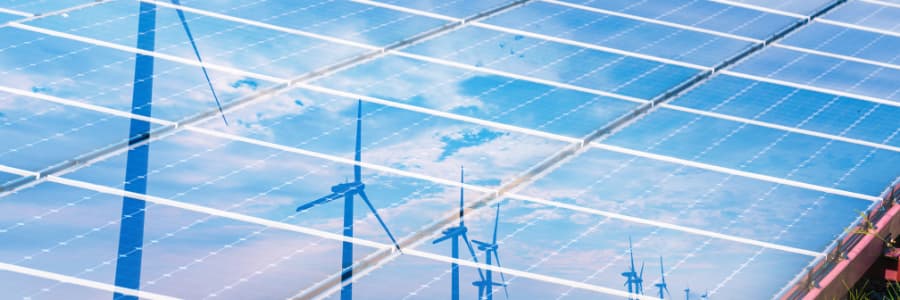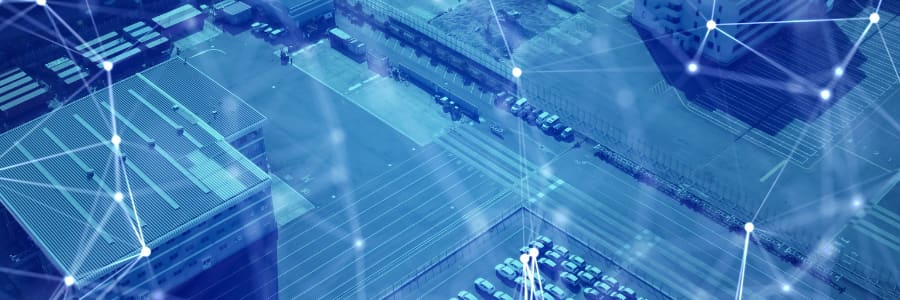The rise of distributed energy resources (DERs), electric vehicles (EVs), and renewable energy opens new opportunities for energy companies and utilities.
To grasp these new possibilities, they must evolve strategies and solutions for grid management and operation. Key components include distributed energy resource management systems (DERMS) and ways of anchoring EVs and DERs as central assets supporting energy flexibility and resilience.
Matching the speed of change will often rely on identifying the best collaborators and solution providers.

The grid’s capacity to maintain – or quickly restore – operations during and after disruptions is under pressure. In the current drive to decarbonise and “electrify everything,” maintaining a reliable, sustainable, and resilient energy supply has never been more crucial or complex.
At the same time, energy flexibility – the ability of the energy system to adapt to changes in supply and demand – is also becoming increasingly vital.
As the adoption of renewable energy grows and the grid becomes more decentralised, the importance of energy resilience and flexibility will continue to grow.
They are core themes for energy companies looking to meet rising electricity demand, which is expected to grow by an average of 3.4% annually through 2026. Future growth rates could increase even steeper.

EVs contribute to increased electricity demand. According to a report by EEI, 26.4 million EVs will be on US roads by 2030. They will constitute about 10% of the 259 million light-duty vehicles in the US. Globally, EVs will represent more than 60% of vehicles sold.
Simultaneously, investments in distributed energy resources (DERs) are rising significantly. By 2030, annual investments will have almost doubled, totalling $846 billion in DER. An additional $285 billion will be invested in associated battery energy storage systems.
These investments are complemented by other fundamental shifts rippling through the energy landscape.
One example is prosumers—individuals or businesses that produce and consume energy. This group increasingly contribute to the grid by selling their excess power production back into it. In the coming years, the prosumer movement and potential will gain pace as vehicle-to-grid (V2G) technology becomes more commonplace, supported by advanced smart charge functionality.

While these shifts empower consumers and promote the green transition toward renewable energy, they also present challenges for energy companies and the energy grid.
Both must manage more complex and decentralised networks of energy sources. This can lead to issues with stability, reliability, and infrastructure.
The transformation demands new approaches to grid management and operations. Traditional centralised models must evolve to accommodate the bidirectional flow of energy and the variable nature of renewable sources.
Here, EVs, DERs, and prosumers can become valuable assets, enhancing energy flexibility and resilience by enabling a more adaptive and responsive energy system.
The key is how they are managed and integrated into existing energy networks and tied to other solutions.
Energy flexibility managed through Distributed Energy Resource Management Systems (DERMS) is a central feature of these efforts.
One recent study of the integration of two large 5 MW EV charging stations into the grid illustrates how DERMS brings different energy elements together. The study showed that aggregated use of EVs through DERMS can successfully mitigate overloads and peak load increases. Similar examples and case studies abound.

DERMS are key to unlocking the vast potential found in DERs and EVs.
For example, a Wood Mackenzie report says that the North American capacity potential of DERs could be beyond 352 gigawatts as early as 2025.
The report highlights the importance of both behind- and front-of-the-meter DERs. It validates the untapped potential for DERs for flexibility-related services such as load balancing.
In other words, a proactive approach to EVs, DERs and DERMS creates new, valuable core assets for energy companies. These assets can help manage demand peaks, address frequency variations, and solve voltage issues, thus optimising the grid’s performance and reliability.

Integrating resources like EVs or DERs and solutions like DERMS can be complex.
Grasping the opportunities of advanced grid technologies and leveraging their abilities, such as real-time monitoring, AI, and machine learning capabilities, is a time-sensitive matter due to increased pressure on energy grids and companies.
In many places, energy infrastructure already needs upgrades to meet increased demands. The challenge is likely to grow in coming years, with power grids requiring as much as $3.1 trillion in new investments by 2030.
In this context, “grid to prosumer” energy solutions and leveraging EVs, DERs and DERMS provide an alternative. This approach can be more cost-effective and allow energy companies to boost energy resilience and flexibility in a much shorter timeframe than infrastructure projects can deliver.
Orchestration of assets and quick integration of such solutions at scale can be based on collaboration.
In this context, utilities and energy companies may wish to prioritise vendors and solutions that offer modular applications, one-stop-shop solution portfolios, and flexible deployment models, providing options for how much investment is needed now and in the future.
These options allow utilities to adapt and grow over time, keeping pace with the increasing pace of EVs, DERs and electrification.